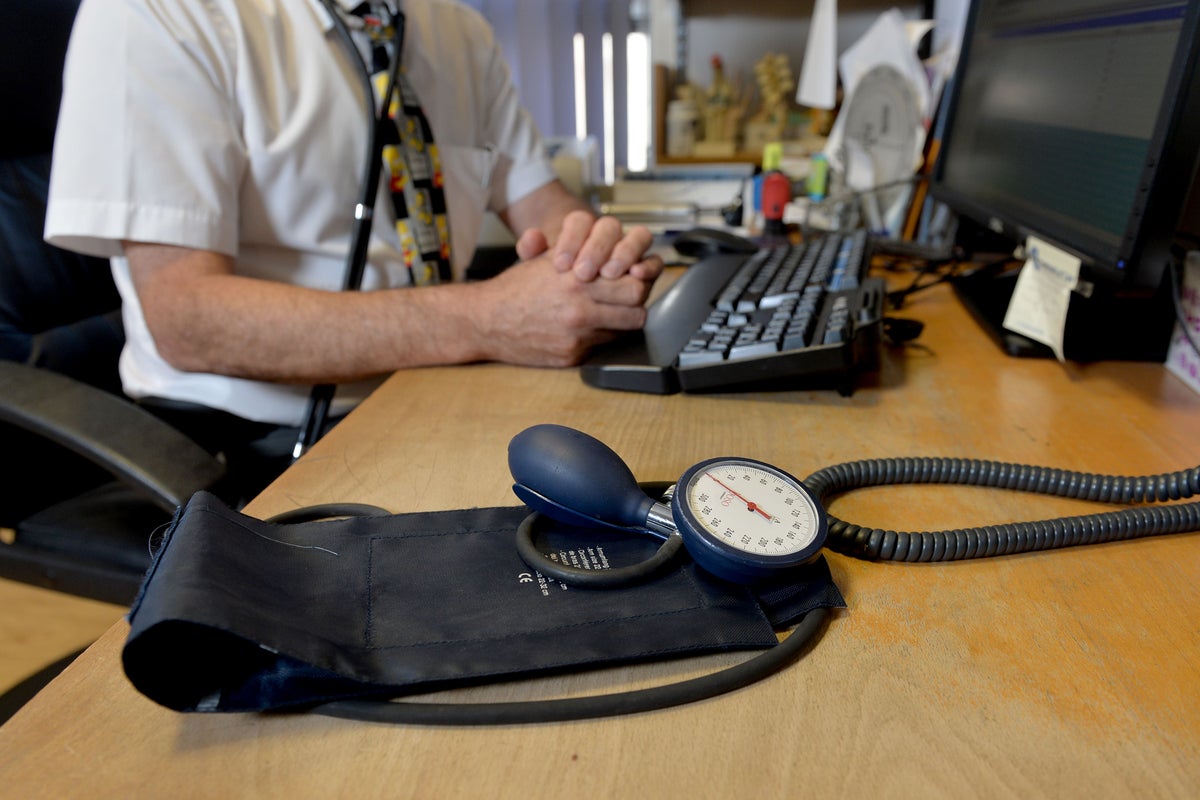
The number of permanent GPs in England has dropped year-on-year for 12 months in a row, as health experts warned the workforce is being “pushed closer towards the precipice”.
There were 26,521 permanent qualified GPs working in England in June 2023, down 1.3% from 26,859 in June 2022, according to new figures from NHS Digital.
It is the 12th consecutive month the number of family doctors has fallen year-on-year, suggesting the total is on a clear downward path.
The latest drop of 1.3% comes after annual decreases of 1.4% in March, 1.5% in April and 1.3% in May.
Professor Kamila Hawthorne, chair of the Royal College of GPs, said the figures show “the true extent of both the workforce and workload crises our GPs are having to cope with” in order to provide appropriate care for patients.
She added: “Our teams have been working continuously under intense workload and workforce pressures in recent years, but the latest data shows just how serious these pressures have become.”
The figures are based on the number of full-time equivalent posts in the GP workforce, and do not include trainees or locums.
GP workforce statistics can fluctuate month to month, which is why year-on-year comparisons are a more reliable measure of long-term change.
The latest figures also show the proportion of GPs in England working full-time at local surgeries continues to be at its lowest level since current records began nearly eight years ago.
Some 22.7% of qualified permanent GPs worked at least 37.5 hours a week in June 2023, down from 23.4% in June 2022, while 69.2% worked between 15 and 37.5 hours, up from 68.6%.
The earliest data shows 33.3% of permanent GPs were working full-time in September 2015, with 59.7% working 15-37.5 hours.
Prof Hawthorne said: “Demand for our services has grown significantly, we’re now dealing with over five million more appointments a month than in December 2019 – around 70% of which were carried out face to face – but with 977 fewer fully qualified, full-time GPs.
Many GPs are experiencing burnout, low morale and a sense of moral distress at not being able to offer patients access to much-needed care— Prof Kamila Hawthorne, Royal College of GPs
“The average number of patients per GP in England is now a staggering 2,302 – an increase equivalent to an extra 159 patients per GP since December 2019.”
She also said workloads have snowballed while the nature of appointments are becoming more complex due to patients with chronic conditions.
Prof Hawthorne added: “Many GPs are experiencing burnout, low morale and a sense of moral distress at not being able to offer patients access to much-needed care.
“We know that when GPs do leave the profession earlier than planned, it is often due to the pressures of the role, which results in a vicious cycle effect, whereby the workloads of those who remain in practice intensify.
“College surveys have shown that this cycle is likely to get worse, with many of our fully qualified GPs considering leaving general practice in the next five years.
“While there is hope that this situation can be turned around, it is evident that general practice is being pushed closer towards the precipice.”
The Government unveiled its long-awaited NHS Workforce Plan in June, pledging to add more than 300,000 additional staff to the health service, as well as hiking the number of GP training places by 50% to 6,000 by 2031.
Prof Hawthorne said the blueprint “is an opportunity to address some of the most pressing issues”, but added: “We need to see it enacted as an absolute priority, including significant investment for improved retention initiatives to curb the rate at which GPs are leaving the profession and encouraging the next generation of GPs into the workforce.”







